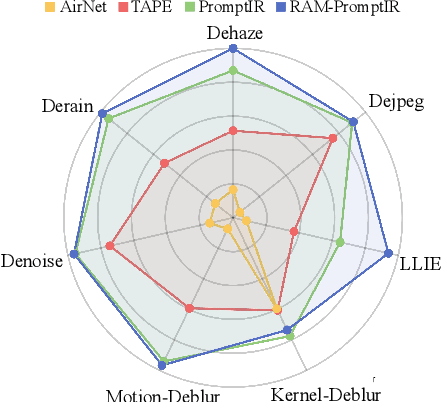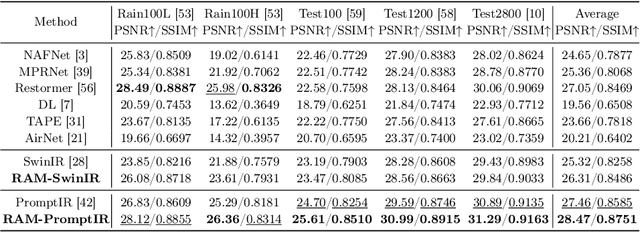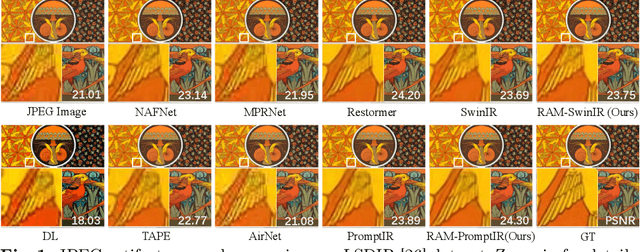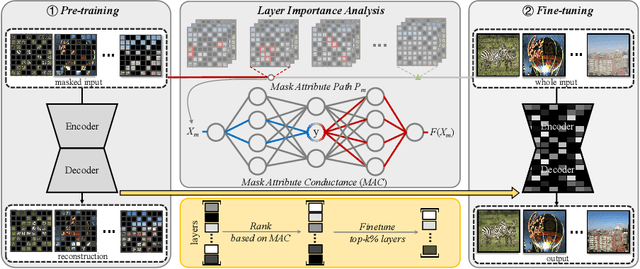Rui-Qi Wu
Restore Anything with Masks: Leveraging Mask Image Modeling for Blind All-in-One Image Restoration
Sep 28, 2024



Abstract:All-in-one image restoration aims to handle multiple degradation types using one model. This paper proposes a simple pipeline for all-in-one blind image restoration to Restore Anything with Masks (RAM). We focus on the image content by utilizing Mask Image Modeling to extract intrinsic image information rather than distinguishing degradation types like other methods. Our pipeline consists of two stages: masked image pre-training and fine-tuning with mask attribute conductance. We design a straightforward masking pre-training approach specifically tailored for all-in-one image restoration. This approach enhances networks to prioritize the extraction of image content priors from various degradations, resulting in a more balanced performance across different restoration tasks and achieving stronger overall results. To bridge the gap of input integrity while preserving learned image priors as much as possible, we selectively fine-tuned a small portion of the layers. Specifically, the importance of each layer is ranked by the proposed Mask Attribute Conductance (MAC), and the layers with higher contributions are selected for finetuning. Extensive experiments demonstrate that our method achieves state-of-the-art performance. Our code and model will be released at \href{https://github.com/Dragonisss/RAM}{https://github.com/Dragonisss/RAM}.
RIDCP: Revitalizing Real Image Dehazing via High-Quality Codebook Priors
Apr 08, 2023



Abstract:Existing dehazing approaches struggle to process real-world hazy images owing to the lack of paired real data and robust priors. In this work, we present a new paradigm for real image dehazing from the perspectives of synthesizing more realistic hazy data and introducing more robust priors into the network. Specifically, (1) instead of adopting the de facto physical scattering model, we rethink the degradation of real hazy images and propose a phenomenological pipeline considering diverse degradation types. (2) We propose a Real Image Dehazing network via high-quality Codebook Priors (RIDCP). Firstly, a VQGAN is pre-trained on a large-scale high-quality dataset to obtain the discrete codebook, encapsulating high-quality priors (HQPs). After replacing the negative effects brought by haze with HQPs, the decoder equipped with a novel normalized feature alignment module can effectively utilize high-quality features and produce clean results. However, although our degradation pipeline drastically mitigates the domain gap between synthetic and real data, it is still intractable to avoid it, which challenges HQPs matching in the wild. Thus, we re-calculate the distance when matching the features to the HQPs by a controllable matching operation, which facilitates finding better counterparts. We provide a recommendation to control the matching based on an explainable solution. Users can also flexibly adjust the enhancement degree as per their preference. Extensive experiments verify the effectiveness of our data synthesis pipeline and the superior performance of RIDCP in real image dehazing.
 Add to Chrome
Add to Chrome Add to Firefox
Add to Firefox Add to Edge
Add to Edge